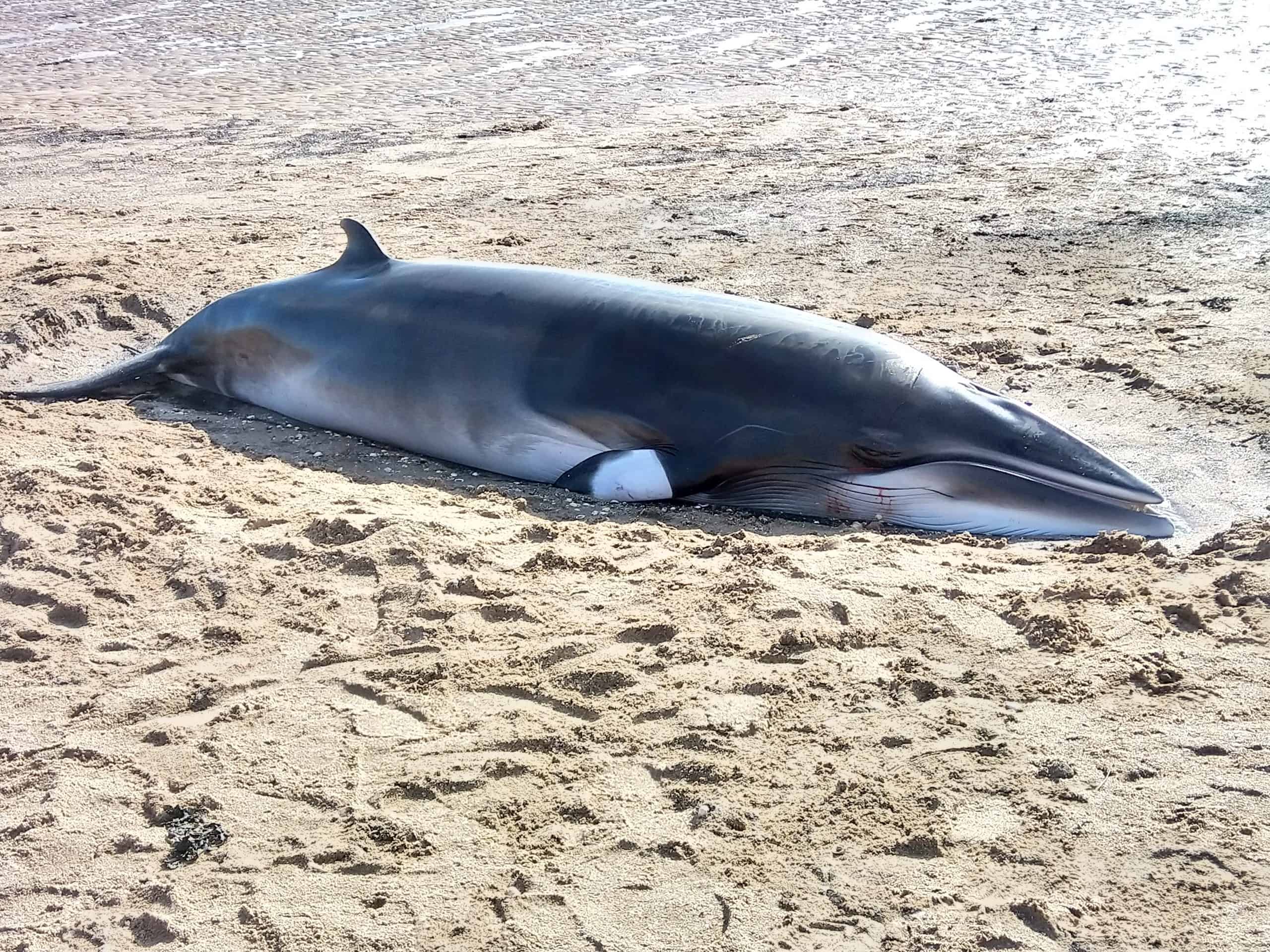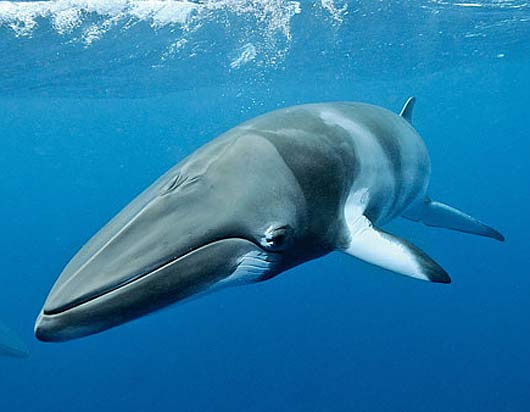

Single individuals to small pods have been observed in the feeding grounds. Distribution in the low latitudinal breeding grounds is predominately composed of solitary individuals that from into small pods of approximately five whales during Spring, then returning back to solitary individuals during November prior to heading south to the feeding grounds. Data from Brazil (Williamson 1975) also suggests segregation by sexes (as well as by size) during the winter migration. Similarly sexual segregation has been observed in the breeding grounds with immature Antarctic Minke Whales comprised the larger proportion of the catch off Durban in South Africa, during the early part of the season between April to May (Best 1982). Whaling data has indicated that mature males and females arrive at different times during the feeding season – males in June, females in July. Scattered sightings have been made in the sub-Antarctic from December to March. The Antarctic Minke Whale is considered to be an oceanic whale preferring the deeper waters off the continental shelf.ĭwarf Minke Whales have been recorded in the waters off South Africa, Australia, New Zealand, New Caledonia and eastern coast of South America from March to December.

Global – The Antarctic Minke Whale and Dwarf Minke Whales are found throughout the Southern Hemisphere from their mid-latitudes breeding grounds (30° S and 10° S) during the winter months then migrating deep in the Southern Ocean up to the Antarctic ice edge to feed over the summer months.

Their winter breeding grounds appear to off the continental shelf edge off mainland Australia although due to a lack of observations estimations of populations and their locations cannot be accurately calculated. During the summer months they can be found feeding along the Antarctic sea ice edge where they form into larger feeding pods. It is thought that the Antarctic Minkes do not travel as far north as the Dwarf Minke Whales. Antarctic Minke Whales are not that gregarious and tend to be found alone or in pairs. Australia – Antarctic Minke Whales have been recorded in the waters of all states except the Northern Territory although their exact range is not yet completely understood. They have even been spotted up to 350 km south of the ice edge during winter, suggesting that some of the population may over-winter in Antarctica. Each year they will undertake long and extensive migrations from their summer Antarctic feeding grounds to their winter sub-tropical to tropical breeding grounds. Lizard Island on the Great Barrier Reef, Qld Distribution and Movement PatternsĪntarctic Minke Whales and Dwarf Minkes are found across the Southern Hemisphere’s waters from the tropics too deep in the Southern Ocean. In short bursts they can travel at almost 40kmp and have been known to create an almost roster tail like wake. Minke whales are known to be very curious and will often approach boats. When preparing to deep dive they will expose and arch their backs but do not raise their tails from the water. The dorsal fin is a tall falcate shape (sickle-shaped) and positioned relatively far forward on the middle third of the body. Once on the surface you will be able to see most of their length including most of their back, blowhole and dorsal fin. They trend to surface nose first with a small bushy blow about two metres in hight. Minke whales have between 240 and 360 baleen plates on each side of their mouths. Minke Whales have a beautifully streamlined body with a very narrow and pointed rostrum that has a single ridge. They are the second smallest of the baleen whales with only the Pygmy Right Whale being smaller. Minke Whales are fast, active and highly manoeuvrable whales that are beautifully shaped and coloured, particularly the Dwarf Minke Whale.


 0 kommentar(er)
0 kommentar(er)
